





|

|
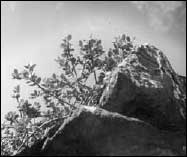
Sea-Box (Alyxia Buxifolia)
[56 K]
|
 dna Walling is one of Australia's best loved landscape designers. dna Walling is one of Australia's best loved landscape designers.
|
 | First thoughts on a garden are best inspired by the ground with any feature at all, such as an undulation or a rocky outcrop, there is your inspiration.
|
 |
|
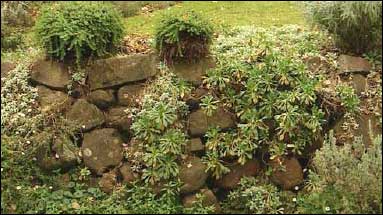
Kiloren, Crookwell, New South Wales
|
Walling's style changed very little throughout her career however each garden is unique. She is renowned for her use of stone, especially in low fences or walls and steps, where moss was encouraged to grow. Dense greenery with few flowers, and a naturalness that softens and unites the garden to its house, also identifies Walling's gardens. Her aim was always to create unity between the house and the garden.
|
|
Edna Walling's basic design principles were based on a set of design ethics:
 Work with existing landscapes and existing features, such as slopes, rocks and trees Work with existing landscapes and existing features, such as slopes, rocks and trees
 Begin by 'sculpting' the surface of the land, preferably not levelling it Begin by 'sculpting' the surface of the land, preferably not levelling it
 Create a unity between the house and the garden Create a unity between the house and the garden
 Use architectural principles to structure the garden and soften with dense planting Use architectural principles to structure the garden and soften with dense planting
 Individually design for each house and garden and the needs of the clients Individually design for each house and garden and the needs of the clients
 Keep garden maintenance to a minimum Keep garden maintenance to a minimum
|
|
|
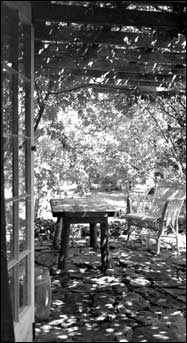
|
Edna Walling had a free and easy attitude to garden maintenance and she believed that every window of a house should have a view of the garden, to create the effect of bringing the garden into the house.
|
 |
Maintenance would appear to be of first importance in the planning of a property. Secondly, the idea that the atmosphere should be restful, suggesting peace and quietness and relaxing should be aimed at.
|
 |
|
|
Walling has influenced many home gardeners through her articles in the Australian Home Beautiful and her popular gardening books. It is her ideas and vision as much as her gardens that are Walling's design legacy.
|
|
|
Peter Watts, author of "The Gardens of Edna Walling" identifies three main Walling garden styles:
 Informal cottage - e.g. the gardens of Bickleigh Vale village Informal cottage - e.g. the gardens of Bickleigh Vale village
 Structured - used in suburban blocks - a blend of cottage in the front garden and geometric in the back garden Structured - used in suburban blocks - a blend of cottage in the front garden and geometric in the back garden
 Formal geometric - used on large blocks and estates e.g. Mawarra and the garden of Ringland Anderson Formal geometric - used on large blocks and estates e.g. Mawarra and the garden of Ringland Anderson
|
|
|
|

|
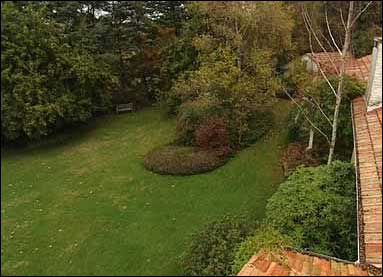
Kiloren, Crookwell, New South Wales
|
 dna Walling grew up in England. Walks with her father across the moors introduced the young Walling to the low growing shrubs, gravel paths and the quaint cottages of Devonshire, leaving a lasting impression. Walling's landscape designs developed from the English style, exemplified by the designer Gertrude Jekyll. dna Walling grew up in England. Walks with her father across the moors introduced the young Walling to the low growing shrubs, gravel paths and the quaint cottages of Devonshire, leaving a lasting impression. Walling's landscape designs developed from the English style, exemplified by the designer Gertrude Jekyll.
|
|
Jekyll was influenced by the Arts and Crafts movement which sought to blend the arts. She endeavoured to unify the garden with architecture, as did Walling:
|
 | So much money is spent on the house and then it often is left without any connecting link with the land... The garden should be built first, forming the setting for the house which should then be linked up with it.
|
 |
|
|
At a time when Australians loved all things English and when English migration was at its peak, Walling's English style designs complemented the stately manors that were fashionable during this era.
However Walling was also influenced by Spanish and Italian gardens. Their use of stone and water, terracing, pergolas, courtyards and paving were an inspiration. In the forties she commented:
|
 | It is really rather amazing that we have copies of the English style rather than Spanish and Italian because in this climate, protection from hot winds is essential to civilised living.
|
 |
|
|
Edna Walling was confident and determined. At 26 years of age, she decided to build an English style village and home for herself. Bickleigh Vale village is a striking example of her design flair and strength of vision.
Walling built and designed several more village houses. Simple cottages beautifully integrated with the landscape
|
See 'Homes' for more about Bickleigh Vale
|
|
|
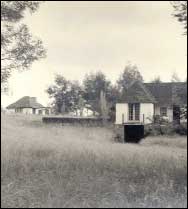
Downderry, Bickleigh Vale[59 K]
|
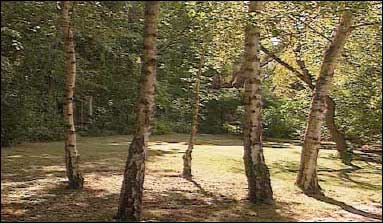
Bickleigh Vale, Mooroolbark, Victoria
|
Over the years, Walling increasingly used native plants in her designs. This was probably the most significant shift in her approach. Glen Wilson, a former student of Walling's recalls:
|
 |
...she was keen on establishing stands of birches. One day during a 'lesson' I asked her if she thought the white trunks of birches and eucalypts could be acceptable together. She answered, "Perhaps, but why use the birches?" This illustrates the complete turnaround of her attitude in later years.
|
 |
|
|
Her garden plans developed in style but eventually she was content to draw a simple plan on paper and hand it to those who had worked with her for many years. They knew what she wanted.
|
|
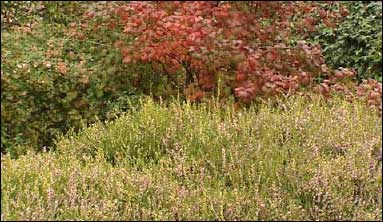
Kiloren, Crookwell, New South Wales
|
|
|
|
Many of Walling's garden plans are works of art in themselves, painted in soft watercolour and outlined in ink, bringing her ideas to life.
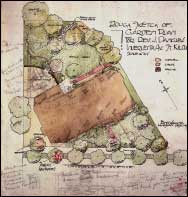
|
|

|
|
 alling created 'rooms' in her garden plans. A room may be for the vegetable patch, to encompass a pool, as a place of repose or to be used as a formal space. She often used pathways to connect the garden's 'rooms' creating a romantic feel as each is discovered. alling created 'rooms' in her garden plans. A room may be for the vegetable patch, to encompass a pool, as a place of repose or to be used as a formal space. She often used pathways to connect the garden's 'rooms' creating a romantic feel as each is discovered.
|
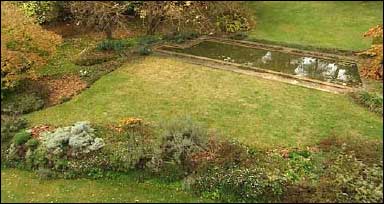
Kiloren, Crookwell, New South Wales
|
|

 alling encouraged the view that gardening was meant to be relaxing, enjoyable and rewarding. Gardens that were fastidious and time consuming were discouraged. Plants that spread and required low maintenance were appreciated for their hardiness and low maintenance. alling encouraged the view that gardening was meant to be relaxing, enjoyable and rewarding. Gardens that were fastidious and time consuming were discouraged. Plants that spread and required low maintenance were appreciated for their hardiness and low maintenance.
|
|
 
|
|









